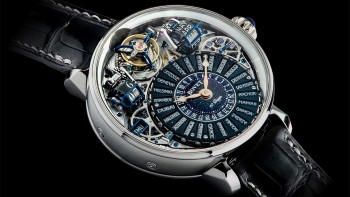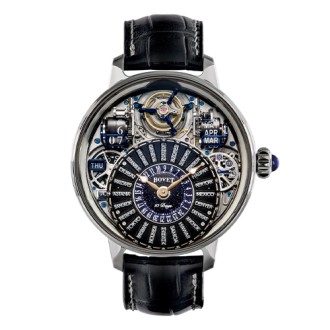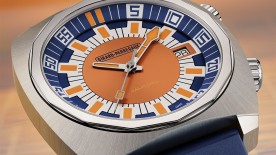Bovet showcases its watchmaking artistry through three distinctive watches, each expressing various facets of the Manufacture, from Grand Complication to sporty timepiece, along with a surprising skeleton model designed in collaboration with Pininfarina.
The saying goes that watchmakers like to complicate their lives. They do indeed, as complications lie at the very core of their profession. This focus is however sometimes entirely dedicated to simplifying the lives of collectors. As another maxim teaches us that there’s nothing more complicated to achieve than extreme simplicity, who are we to believe?
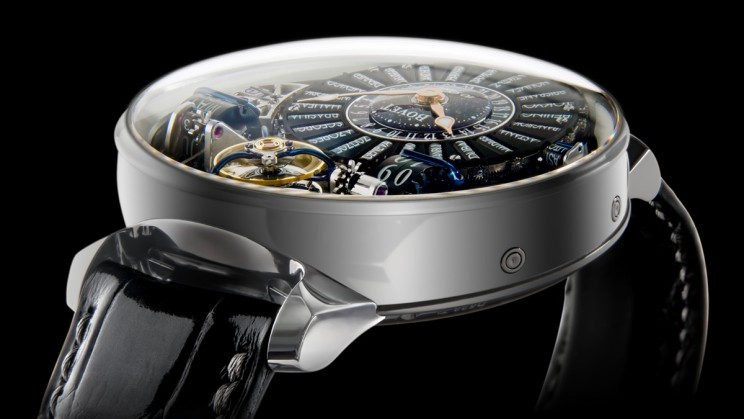
Pascal Raffy, owner of Maison Bovet, has his own idea: “Believe me, when I pitched the idea of the Récital 28 Prowess 1 to my teams, they thought I was crazy.” One can indeed give credence to the word of a man renowned for getting involved at the heart of each movement’s development. Récital 28 is no exception. This timepiece tackles one of watchmaking’s blind spots: in addition to the classic 24 time zones, it has to deal with time changes that do not take place on the same date from one continent to another.
Since the introduction of daylight-saving time, no worldtimer has been able to adapt to the vagaries of time change in different countries, or to those that do not change time (only around 70 countries change time, in one form or another). Something never addressed by any mechanism has, by definition, never been standardized. Bovet’s first task was therefore to define four ranges covering the time zones concerned. Starting with Universal Coordinated Time (UTC), Bovet added AST (American Summer Time), EAS (European and American Summer Time) and EWT (European Winter Time).
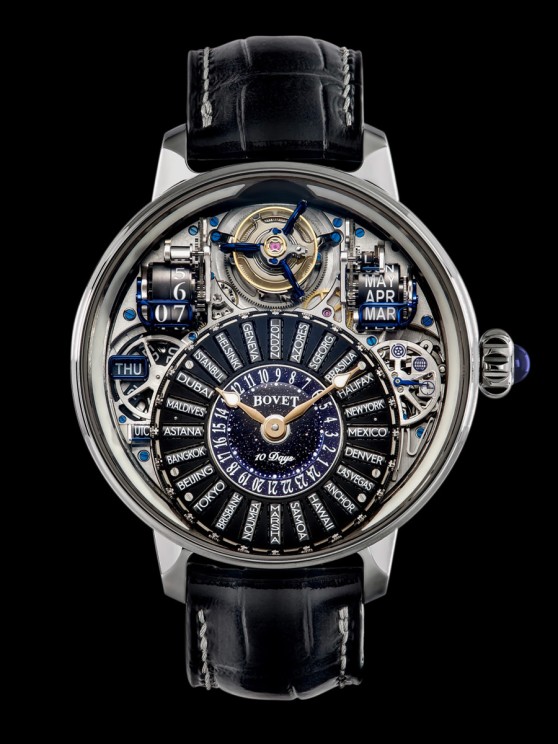
It’s easy to imagine the number of variables that the Récital 28 Prowess 1 would have to organize by combining these four zones, each associated with one of the 24 conventional time zones: the amount of combinations is exponential. The second challenge facing Bovet’s engineers was how to display them clearly, legibly and concisely.
Raffy directed his teams towards his ‘writing desk’ case. An aesthetic signature of the Manufacture, it offers generous volume thanks to its asymmetry, being wider at 12 o’clock than at 6 o’clock. Watchmakers did not hesitate to occupy it with a movement that ended up comprising 744 components, yet this was only the first step, because above and beyond the “worldtimer” complication, a Bovet timepiece has its own requirements.
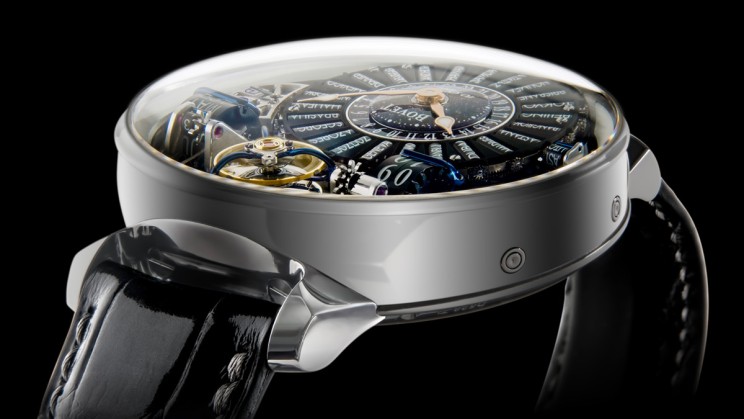
Like its predecessors, the Récital 28 Prow- ess 1 was to feature a flying tourbillon and a ten-day power reserve. This is made possible by the gentle frequency of its escapement operating at 2.5Hz (18,000vph), recalling the historical pocket-watches of the Manufacture founded in 1822 and which hardly anyone uses any more.
“After three years of R&D, my teams succeeded in producing the first Prowess 1 prototype movement”, explains Pascal Raffy. “We had all the technology, it was perfect. The model was 99% finished, but we were lacking that precious 1% of emotion.” That subjective, unquantifiable latter quality to which Raffy refers posed a new challenge for his engineers.
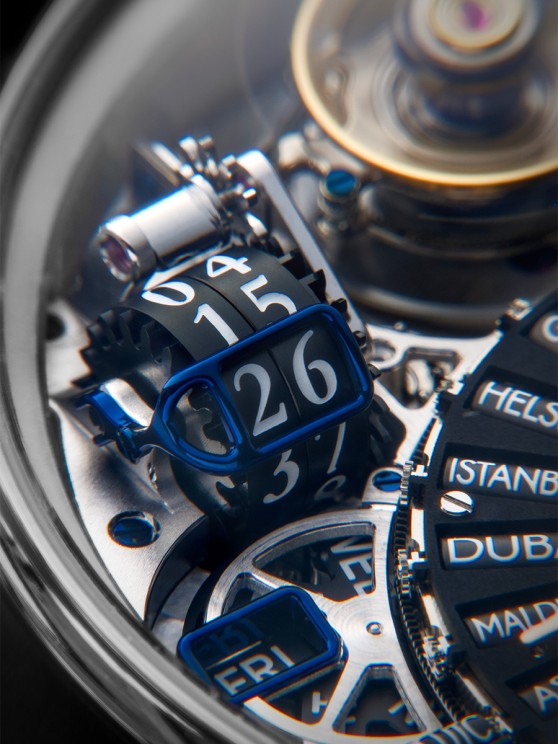
The idea was to indicate all the information of the perpetual calendar and worldtime functions – including time changes – on roller-type displays. To achieve this, Bovet’s engineers had an idea: treat the rollers as if they had a square cross-section, i.e. with four faces. Each of the 24 rollers has four printed positions (UTC, AST, EAS and EWT). Pressing the crown turns them successively through 90°.
Now completed, the Récital 28 Prowess 1 lives up to its name. This is Bovet’s most complex movement and will require three full-time staff throughout its life cycle, which should extend over six to seven years for a maximum of 60 movements.
This article is an excerpt from the upcoming GMT XXL World Magazine, debuting at Geneva Watch Days August 29th. Pre-order your copy here.

